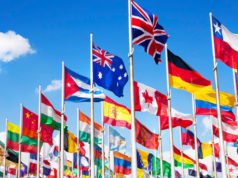Tahira Khan
BRI is a giant venture of China to bring economic collaboration among different parts of the world. As per the statement of Chinese authorities, BRI has involved multiple countries up till now. However, these participating countries are not fully endorsing the BRI initiative. Some of these states are partially embracing the economic initiative. But, still, this large-scale involvement of countries is a positive sign for China.
To date, China has sponsored and built everything including highways, railways, fiber optic cables, railways, ports, telecommunication infrastructure, and smart cities. Overall, the BRI project can spur economic growth in many developing countries if the project is carried out sustainably. Contrarily, the recipient countries are forecasting reports which are outweighing the benefits of BRI.
As per the claims of China, BRI will foster economic collaboration in form of trade, investment, and industrial development. BRI is also expected to bring peace and stability to the region. Despite these prospects, the broader perception of BRI is increasingly becoming negative around the globe. One of the surveys reported the results to show the cautious behavior of ASEAN towards BRI in particular and China in general.
According to the South East Asian States, China is a revisionist state and BRI is an act to turn the region under Chinese influence. Moreover, the report indicates that 63% of the respondents showed concerns about the BRI project. In addition to that, Pew Research Centre surveyed the matter and indicated the negative behavior of developed countries toward the rising influence of China.
It is pertinent to note that BRI is receiving negative feedback due to several reasons. Firstly, BRI is not following internationally recognized standards which include transparency, environmental safeguards, labor rules, and open bidding. Secondly, BRI has remained failed to attract private investment and stakeholders. Thirdly, BRI has not involved local companies and the workforce. Fourthly, BRI involves the lending of interest-based loans along with interest which is threatening the economies of various involved countries.
Following that, research indicates that BRI can’t be helpful for low-income countries such as Pakistan, Kyrgyzstan, Djibouti, Mongolia, and Laos. These countries have suffered debt due to Chinese investment in the context of BRI. Further, the research took the China-Laos Railway project as a case study. This railway line is connecting the capital of Laos, Vientiane, to the provincial capital of China, Kunming. The project involved Chinese companies, skilled and unskilled labor force. Besides, the construction process depended on Chinese raw materials and equipment.
The China-Laos Railway began operation in 2021. China provided the design, construction, and technical expertise for the project. It also trained the local labor force involved in the construction process. In brief, Laos does not have any experience in building such large railway projects. The country also has few skilled engineers and a labor force. It is pertinent to note that Laos expected an economic boom from the project as such a large-scale construction never happened in the history of the country.
In contrast, the economic condition of Laos suffered severely. How can an underdeveloped nation gain industrialization, tourism, and agricultural benefits from a railway project owing just to its strategic location? Consequently, Laos suffered due to the BRI project instead of having economic and social benefits. There may be several reasons behind this economic crisis. Firstly, the economic debt of Laos increased due to the external debt taken for the BRI. Secondly, railways themselves cannot bring development to the region. It requires concerned authorities to transform its potential into concrete results. Thirdly, cross-border travel between both countries faced restrictions due to Covid-19. However, the exports from both sides during the corona period remained intact. But, this revenue is not sufficient if we take into account the cost of the project.
Owing to the negative response towards BRI, President Xi Jinping affirmed bringing multilateral BRI projects that would be equally beneficial for all the participating countries. This pledge took place at the 2nd BRI Summit. Therefore, Chinese authorities are trying to take tangible steps to bring a positive image of BRI to the world. In this regard, China has taken several readjustment measures including debt deferment, project refinancing, and market cooperation. The authorities are also trying to shift focus towards environment-friendly projects such as solar and wind power. As far as the local populace of the recipient country of BRI is concerned, China is trying to involve the local populace in the projects to bring forth revenue and employment generation.
In this regard, Malaysia East Coast Rail Link can be taken as an example. Malaysia and China started this project in 2016. Owing to criticism, both countries renegotiated the project in 2019. In the context of readjustment, China first lowered the cost of construction. Similarly, in 2020, China suspended debt payments for underdeveloped nations temporarily. China also supported this G-20 Debt Service Suspension Initiative to 2021.
In particular, the readjustment plans of China are focused on debt reduction and refinance. But, the domestic financial condition of China is paving hurdles. On the other hand, China is favoring third-party market collaboration to pursue multilateral cooperation in the context of BRI. Nevertheless, the Chinese government has already signed such contracts with fourteen countries. Accordingly, China is favoring the State Grid of China and Singapore Power, China Communication Construction Group, and China Railway Group as third-party market collaborators.
Previously, the energy projects of BRI involved carbon-intensive fossil fuels which includes the use of coal as well. As per the report of the World Resource Institute, 95% of the energy investment involved fossil fuels from 2014 to 2017. The report further stated that the China Development Bank and Export-Import Bank of China have 60% financing for fossil fuel-related projects. Similarly, the Council of Foreign Relations calculated that 40% of BRI lending in Pakistan is identified for coal-fired power plants. In the same vein, BRI energy and transport projects didn’t involve environmental assessment studies. This is one of the major reasons that recipient countries were forecasting environmental catastrophes due to the BRI project.
In response, China is returning to renewable sources of energy. In 2020, the total share of renewable energy investment in China rose to US$ 11 billion i.e., 57%. Previously, in 2019, this figure was as low as 38%. Chinese authorities also renegotiated the Gazaria coal firepower project with Bangladesh. The purpose of the readjustment deal was to phase out investment in coal. Chinese authorities are also expected to make similar renegotiations in other countries to counter climate change and lessen coal-fired plants.
Although, China is going towards a clean and green BRI. Still, there are some limitations to the initiative. Some research reports portray a different and contradictory picture of green investments of BRI. One of the reports conveyed the message that the use of coal-related projects rose from 15% in 2018 to 27% in 2020. Consequently, the report suggests that there is a lack of tangible efforts to reduce the usage of non-renewable resources. Banks and firms in China may not be willing to invest in coal-fired plants but they have not stopped lending altogether. In 2020, the State Development Bank of China-funded Pakistan with a coal power plant. Accordingly, in 2020, the Export-Import Bank of China financed the Serbian government for a coal investment.
The writer holds an M.Phil Degree in South Asian Studies from the University of Punjab. She can be reached on Twitter @TahiraGhilzai.
Disclaimer: Views expressed in this article are those of the writer and Balochistan Voices does not necessarily agree with them.
Share your comments!








